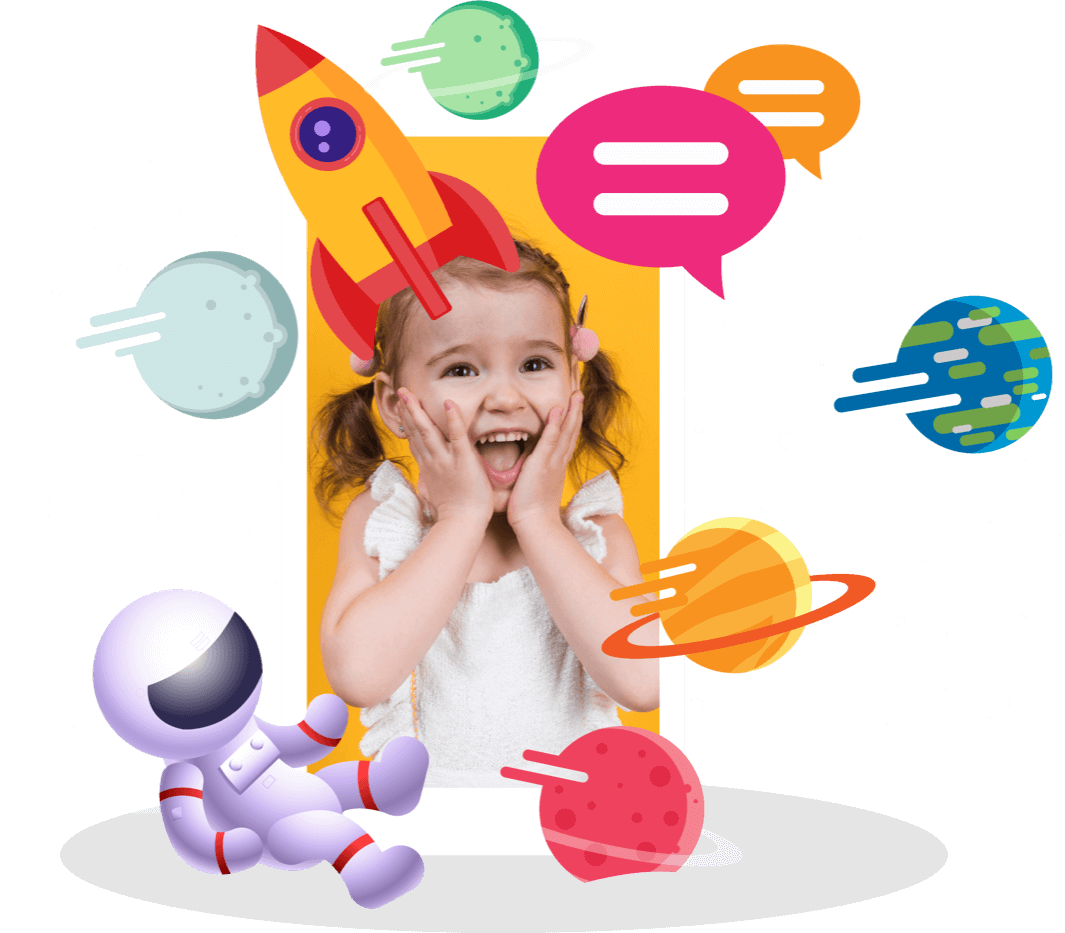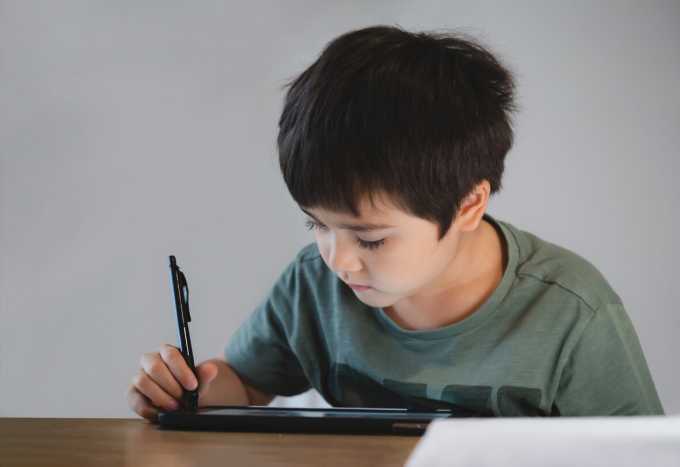Distance learning has become an integral part of education for many students around the world, especially when the entire world went into a lockdown. While online education offers numerous benefits, it may also present unique challenges for families of students with disabilities. This article explores the obstacles that students with disabilities may face in distance learning, and offers strategies for parents to support their children during these trying times.
The Challenges of Distance Learning for Students with Disabilities and Their Families
Distance learning offers a lot. But that’s not to say that there are no downsides to it. Here are some of the challenges parents and caregivers face when it comes to distance learning.
1. Difficulty Accessing Curriculum and Materials
Distance learning can be challenging on its own for kids of all developmental levels. However, for students with disabilities, it can be even more challenging due to difficulties in accessing the curriculum and materials. Students with severe disabilities, such as physical disabilities or sensory impairments, may require specific accommodations to participate in online classes. In some cases, the digital learning platforms and tools may not be designed with accessibility in mind, thus violating the Americans with Disabilities Act for distance learning.
Come along with 200k+ families!
Explore the endless possibilities of learning!
Download for Free.
2. Social-Emotional Challenges
Distance learning for kids with learning disabilities can also exacerbate social-emotional challenges. Education and school is not only focused on academic development. The social aspect of going to school is also crucial for the development of kids. The lack of face-to-face interactions with teachers and peers may lead to feelings of isolation and loneliness. These feelings can be particularly pronounced for students with disabilities, who may already struggle with social skills and emotional regulation.
3. Communication Barriers
Communication barriers can also make distance learning for students with disabilities more difficult. Students with speech or language impairments may have a harder time expressing themselves or understanding instructions in an online setting. Additionally, the reliance on written communication in distance learning can be challenging for students with learning disabilities, such as dyslexia or dysgraphia.
4. Inadequate Accommodations and Modifications
In a distance learning environment, it may be challenging to provide adequate accommodations and modifications for students with disabilities. This can lead to inequitable learning experiences, as these students may struggle to keep up with their peers or fully engage with the curriculum without the necessary support.
5. Sensory Overload and Distractions
Learning is a process where kids are introduced to many new concepts around their environment. Distance learning for students with disabilities can be overwhelming, as they may experience sensory overload from screen time or struggle with distractions in their home environment. This can make it difficult for students to focus and retain information, hindering their academic progress.
6. Transitioning Between In-Person and Online Learning
The shift between in-person and online learning can be especially challenging for students with disabilities. They may need additional support to adapt to new routines, learning formats, and communication methods, which can be time-consuming and exhausting for both students and their families.

7. Limited Opportunity for Hands-On Learning
Distance learning often relies heavily on digital content and may lack opportunities for hands-on learning. This can be particularly detrimental for students with disabilities who may benefit from tactile or kinesthetic learning experiences to grasp complex concepts more effectively.
8. Inconsistent Implementation of Interventions
Interventions for persons with disabilities in distance learning may be inconsistently implemented or not as effective as in-person support. This can lead to gaps in the provision of essential services, negatively impacting students’ progress and overall well-being.
9. Strain on Family Dynamics
Distance learning for students with disabilities can place a strain on family dynamics, as parents and caregivers may need to take on additional roles in supporting their child’s education. This can lead to increased stress and tension within the family unit, potentially affecting the student’s learning experience.
10. Unequal Access to Resources and Support
Some students with disabilities may not have equal access to the resources and support they need to succeed in distance learning. Factors such as socioeconomic status, geographical location, or language barriers can exacerbate existing disparities, leading to an unequal playing field for these students.
10 Strategies for Parents of Students with Disabilities
Although there are some challenges parents and caregivers face with distance learning, there are many strategies they can try to overcome with success! Here are some of the strategies that you can try.
1. Encourage Self-Advocacy
Teach your child the importance of self-advocacy and empower them to communicate their needs to their teachers and peers. By developing self-advocacy skills, your child will become more independent and confident in their abilities to navigate the distance learning environment. Encourage them to ask for clarification when needed and express their preferences for accommodations or modifications to ensure they receive the support they require.
2. Establish Routines and Schedules
Creating a consistent daily routine can help students with disabilities feel more secure and focused in their distance learning experience. Establishing set times for schoolwork, breaks, and leisure activities can provide structure and help students manage their time effectively. A well-structured routine can also help prevent feelings of overwhelm and burnout by ensuring a balance between academic and personal life.
Come along with 200k+ families!
Let's communicate better!
Download for Free.
3. Collaborate with Your Child
Work together with your child to set realistic goals and expectations for their distance learning experience. Collaborating on goal-setting can help your child feel more invested in their education and motivated to achieve their objectives. In addition, by understanding your child’s strengths and areas of improvement, you can tailor support and interventions that best address their unique needs.
4. Encourage Breaks and Physical Activity
Regular breaks and physical activity are essential for maintaining mental and physical well-being during distance learning. Encourage your child to take short breaks between lessons, and incorporate physical activities that they enjoy into their daily routine to help reduce stress and maintain focus. By promoting an active lifestyle, you can also support their overall health and well-being, which can contribute positively to their academic performance.

5. Provide a Positive Learning Environment
Create a comfortable, organized, and distraction-free workspace for your child to complete their schoolwork. A positive learning environment can greatly impact your child’s ability to focus and engage with their distance learning materials. Personalize the space with items that promote concentration and motivation, such as visual aids, calming elements, or ergonomic furniture to accommodate any physical limitations.
6. Monitor Progress and Celebrate Successes
Regularly monitor your child’s progress and celebrate their successes, big or small. Acknowledging achievements can boost your child’s confidence and motivate them to continue working towards their goals. Provide constructive feedback and praise for their hard work and dedication, and maintain open communication to discuss areas for improvement or additional support.
7. Stay Informed and Engaged
Stay informed about your child’s distance learning program and actively engage in their education. Attend virtual meetings, review school communications, and maintain open communication with your child’s teachers to stay up-to-date on their progress and any potential challenges. By staying informed and engaged, you can better support your child throughout their distance learning journey, advocate for necessary accommodations, and provide feedback on the effectiveness of implemented strategies.
8. Utilize Assistive Technologies
Research and explore various assistive technologies that can support your child in distance learning. These tools can range from text-to-speech software to adaptive keyboards, and can greatly enhance your child’s learning experience by addressing their specific needs. By utilizing assistive technologies, you can help your child overcome some of the challenges they may face in a distance learning environment.
9. Connect with Support Groups and Networks
Reach out to support groups, parent networks, or online forums dedicated to helping families of students with disabilities navigate distance learning. These communities can provide valuable resources, tips, and emotional support for both you and your child. By connecting with others who share similar experiences, you can exchange ideas and solutions to common challenges while fostering a sense of belonging and understanding.

10. Seek Professional Support When Necessary
Don’t hesitate to seek professional support from therapists, counselors, or special education experts when necessary. These professionals can provide guidance on addressing your child’s unique needs and help you develop strategies to support their distance learning experience. By seeking professional support, you can better equip yourself and your child with the tools needed to succeed in their educational journey.
Conclusion:
Distance learning presents unique challenges for students with disabilities and their families, but by implementing these strategies, parents can help their children overcome these obstacles and thrive in an online learning environment. By staying informed, engaged, and proactive in supporting your child, you can foster a positive and productive distance learning experience that meets their individual needs and promotes their academic and personal growth.





